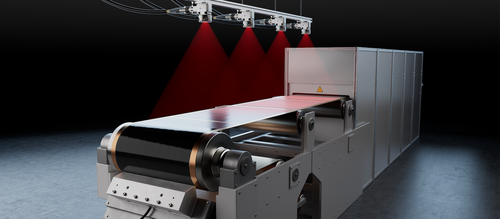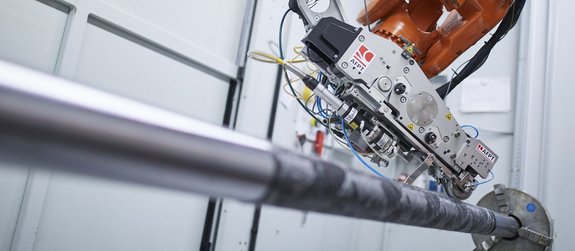
Direct diode lasers optimize tape laying of fiber-reinforced plastics
Laser-based tape laying and winding has already achieved considerable laydown speeds in the production of lightweight components in the past. However, conventional systems with only a single processing head had limited production capacities. Laserline direct diode lasers now enable multi processing head production lines and thus a significant increase in capacity.
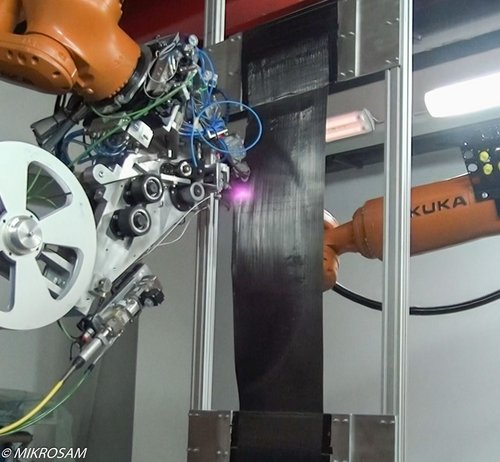
The Demand for Lightweight Components
Today, the demand for lightweight components is increasing in many construction areas. In automotive engineering, aerospace technology, but also in pipeline construction, the weight advantages over the classic material steel is appreciated. In addition to aluminum, fiber-reinforced plastics are primarily used. In fact, they are even 25 percent lighter than aluminum and save 60 to 70 % in the weight compared to steel. The typical manufacturing method for such plastic components is the processing of tapes. There are various approaches to this. In the so-called thermoset tape laying process, the tapes are joined by means of an adhesive. The final components are produced by unidirectional placement of the pre-impregnated fibers and subsequent consolidation in a pressure vessel (autoclaving process). This approach has its disadvantages. Subsequent reheating or forming is not possible. In addition, the adhesive is considered a health risk and the material is not suitable for recycling.
A second approach based on the use of thermoplastic matrix systems has been more industrially successful. These are also processed as tapes but immediately consolidated when they are laid or wound. Tape laying works as follows: The tapes are pulled off the roll using a feed unit, deposited on the work platform or component and bonded together by melting just before the consolidation zone. This is how, for example, organic sheets or local reinforcements of large-area plastic components are produced. For the production of pipes, shafts or tanks, the tapes are deposited on a rotating container or pipe by a type of cross-winding and consolidated directly during the process. In both processes, a high-performance heat source is used for melting and a pressure roller for fixing. Possible heat sources include infrared or halogen emitters, hot gas or lasers. However, the future undoubtedly belongs to the laser-assisted thermoplastic tape laying process: It combines a short, locally concentrated and temperature-controlled heat input into the tape matrix with a high degree of automation. It combines a short, locally concentrated and temperature-controlled heat input into the tape matrix with a high degree of automation. It therefore offers the greatest economic potential.
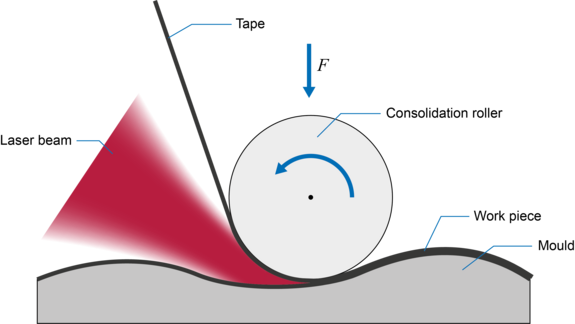
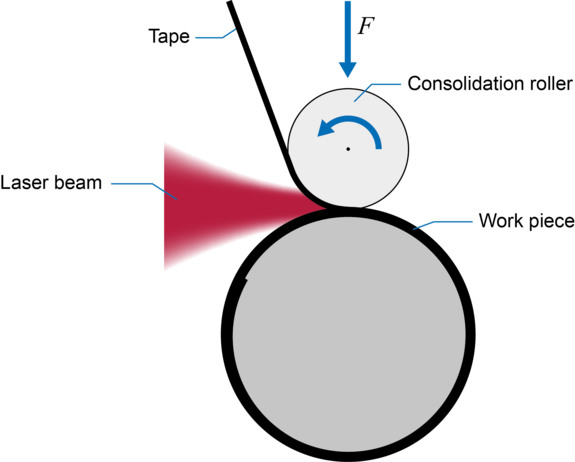
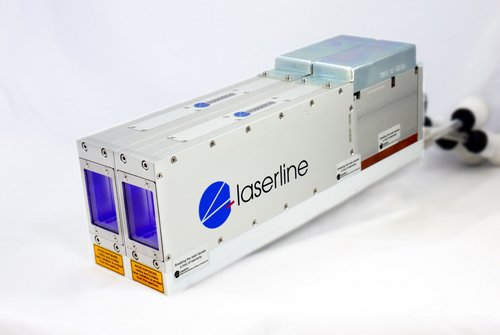
Direct Diode Laser with Multiple Processing Heads for Series Production
The laser-based tape laying process has been used in series production since 2009. However, since conventional production systems previously had only a single processing head, production capacities were noticeably limited. A new development from Laserline offers a solution: With the LDMdirect, users now have access to a modular direct diode laser in a 19-inch design with a maximum output power of 2 kW. The extremely compact design of the laser head with a width of less than 50 mm facilitates installation in robots or machines. In particular, the design enables several processing heads to be integrated next to each other in a single setup and thus used for parallel processing of commercially available tape widths. This significantly increases process speed and production capacity. It finally also creates the prerequisites for economical large-scale production in the field of tape laying.
But what about the processing of endless pipes for pipelines or water pipes? For this application, Laserline developed a globally unique rotating multi-kW diode laser for continuous winding machines. The process: Several lasers rotate simultaneously on a rotating device around the longitudinal axis of the pipe, each laser welding a tape while the pipe is moved back and forth in the process. The process continues until the required number of layers is produced.
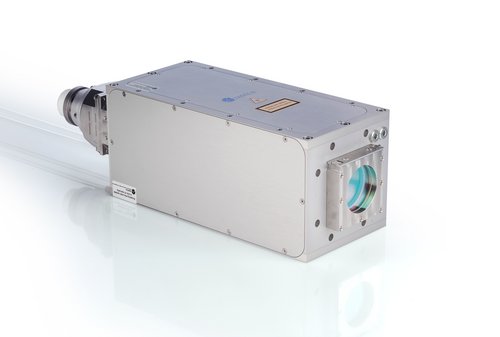
Zoom Function for Adjusting the Laser Beam
Laserline also found new approaches in the field of processing optics by developing homogenizing optics with a zoom function that were specifically designed to meet the special requirements of tape processing. Here, special optical lenses generate a variable rectangular laser beam that can easily be adjusted to the tape width. The homogenizing optics further optimize the already quite uniform intensity distribution of the laser and also enable the laser beam to be adapted to the laying speed of the tapes. The irradiation parameters can be maintained throughout the entire process or adjusted in between, as required.
New Possibilities
The new developments in the field of diode laser technology have thus opened up new possibilities for tape processing overall, both technically and economically. Last but not least, the typical advantage that the LDMdirect has in common with all other Laserline diode lasers also contribute to the following: The fine-graded power control in millisecond cycles allows the temperature input to be precisely regulated. This ensure no decomposition of the plastic matrix when the tapes are melted. The output power is stable and because of the low wear on system components, the maintenance costs are kept to a minimum. With an efficiency value of over 50 percent, the Laserline diode lasers also have the highest energy efficiency in the industrial laser environment. The sustainability of this process is further enhanced by its ability to fully recycle the material. All this together keeps the total cost of ownership low and opens up for a rather rewarding large-scale production in the field of lightweight plastic components, whether pipeline pipes, car doors or aircraft wings.
Learn more about automated tape laying with diode lasers!


